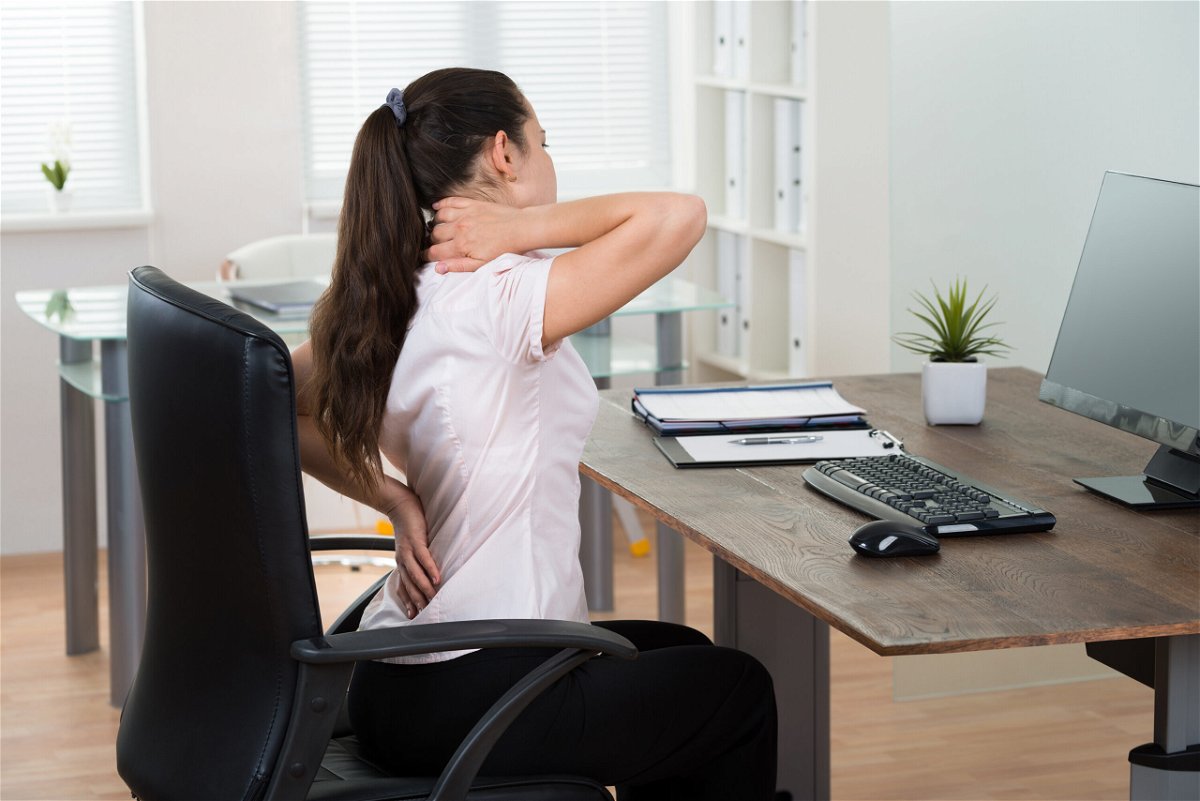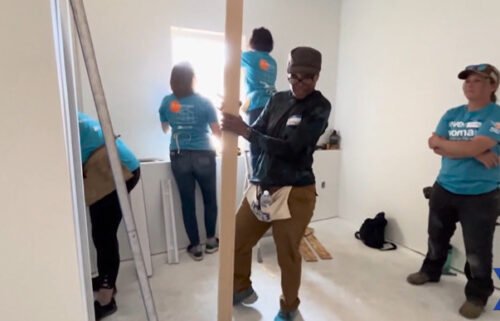What you need to know about your low back pain

As many as 577 million people globally experienced low back pain in 2017
By Dana Santas, CNN
If you’re suffering from low back pain or have grappled with it in the past, you’re not alone.
As many as 577 million people globally experienced low back pain in 2017, a 2020 study cited by the International Association for the Study of Pain revealed. In fact, low back pain causes more disability worldwide than any other condition, according to the US Centers for Disease Control and Prevention.
In the US, it’s estimated that 80% of Americans suffer at least one episode of low back pain in their lifetime, with an additional 50% chance of recurrence within one year.
When you have low back pain, it’s understandable that you’d feel powerless. An acute bout can leave you feeling immobilized for days or even weeks, wondering if you’ll ever feel better again.
Having multiple herniated discs in my back, I understand that feeling. But as someone who has healed my own low back pain and now lives a pain-free, active lifestyle, I’ve made it my goal to empower people with the information and resources needed to recover and live pain free, too. That’s why I’m sharing this four-part series.
Working in professional sports as a mobility coach, it’s part of my job to create treatment and prevention protocols for back pain. As such, my advice in this article series is not only based on medical research and my own back pain journey, but also my work experience helping hundreds of professional athletes overcome and prevent low back pain over the past two decades.
In this first article, I help you gain a better understanding of your own personal experience with back pain, why proactive techniques are more effective than passive approaches, and how you can start finding relief now and forging a path to prevent future pain. In the second piece, we look at exercises for lasting relief and rebuilding strength, while the third article focuses on soothing sciatica. In the last installment, I help you create your own back pain prevention plan.
If you’re ready to get out of pain and stay out, join me for this series.
Understanding your pain as your experience
Back pain is a very personal issue with myriad causes and presentations that impact your recovery and prevention strategies.
The good news is that most cases of back pain are not caused by serious conditions, like fractures or cancer, and 90% improve without surgery, according to the American Association of Neurological Surgeons. Below, I’ve included a list of common causes. Consider which ones may relate to your lifestyle and could be contributing to your pain.
Poor breathing mechanics and posture
Because your rib cage is attached to your spine and your primary breathing muscle, your diaphragm, attaches to your lumbar spine, how you breathe influences spine position, overall posture and, consequently, back pain.
Hip tension
Your low back is designed to be more stable than mobile, so when our hips are tight and lack rotation, if you try to compensate with your low back during twisting movements, it can lead to muscle and disc injury.
Physical trauma
A “broken back” with vertebral fractures is rare, but it can happen due to significant trauma from things like a bad fall or automobile accident. Generally, these incidents result in herniations and/or muscle injury, as opposed to fractures.
Age-related degeneration
Back pain is not a normal part of aging. However, after the age of 30, as bone density and muscle mass begin to decline, so does spinal disc health, so low-back issues can arise, especially if you don’t exercise regularly.
Sedentary lifestyle
As mentioned above, regular exercise is key to the health of our muscles and bones. Our bodies are designed for movement so being sedentary creates stiff, weakened muscles and decreased joint lubrication, including dehydration of spinal discs — all of which can lead to low back pain.
Excess weight or pregnancy
Extra weight in the abdominal area increases the risk of low back pain by putting additional pressure on the spine, which can result in muscle tension, pinched nerves and herniated discs.
Stress
When you’re chronically stressed, your body’s stress response contributes to back pain by creating muscular tension and increased sensitivity to pain.
Low back pain is usually classified according to duration as acute, chronic or subacute:
• Acute lasts less than four weeks.
• Chronic is more than 12 weeks, even if it’s intermittent.
• Subacute is anywhere from four to 12 weeks.
Having an understanding of the potential cause or causes of your pain and its classification will enable more effective conversations with your doctor and other health care professionals.
Seeking out safe and effective relief
Increasingly, research supports that movement is the key to healing and prevention. A 2016 meta-analysis published in JAMA, covering treatment methods for more than 30,000 patients, found that the proactive use of exercise showed greater back pain relief and risk reduction over commonly prescribed passive methods, like medications, support belts, orthotics and bed rest. And combining education with exercise reduced back pain recurrence risk by an additional 10% versus exercise alone.
When your back pain first starts or if you’ve had chronic pain that’s worsened, it might hurt just thinking about exercise. Don’t worry. In future articles in the series, I’ll share safe exercises to help you alleviate your particular type of low back pain. For now, here are two approachable, science-backed techniques you can ease into using to get some relief, as neither are contraindicated for any condition.
Mindfulness meditation
Mindfulness meditation is effective at relieving low back pain, particularly a chronic condition, numerous studies have shown. A recent meta-analysis published in the journal Pain Medicine determined that meditation provides a safe and effective method for managing back pain by reducing pain intensity and improving quality of life more than non-meditation therapies.
Breathing exercises
Practicing proper diaphragmatic breathing is the foundation of all of my back pain treatment and prevention programs in pro sports. That’s because deep breathing not only helps reposition the rib cage and pelvis to take pressure off the spine, it also quiets the stress response by activating the parasympathetic “rest-and-restore” aspect of your nervous system that facilitates recovery. To reduce tension, try this simple 5-7-3 breathing exercise to get started.
Additional pain relief options include massage, acupuncture and chiropractic care. Check with your doctor before trying these treatments to ensure they are not contraindicated for your condition.
When seeing your doctor, be sure to share your personal experience and thoughts on potential causes of your pain as well as your lifestyle goals after you get out of pain. Listen carefully, take notes and ask questions as an active participant in your care plan. For instance, if your doctor orders an imaging scan, like an MRI or CT scan, don’t be afraid to ask what they are looking for. Once your doctor provides a diagnosis, ask why your condition indicates that diagnosis and what the prognosis is. If your doctor recommends any extreme measures like bed rest only or surgery, ask them to explain why they believe it’s the best approach and get a second opinion.
Finally, if your doctor prescribes an opioid painkiller, ask if there are any non-narcotic alternatives and, if prescribed, request that any refills require authorization. As of 2017, the American College of Physicians set new guidelines, urging physicians to favor movement-based treatments and exhaust all other treatment options before prescribing opioid medications for non-radicular low back pain.
Forging a proactive path to recovery and prevention
As you work toward recovery, remember that words and thoughts have power. Too often, when someone suffers an acute bout of low back pain, they describe it as their back “going out” on them. This type of negative, passive phrasing conveys a lack of understanding and responsibility that can impede healing. That’s why it’s important to be armed with the right information and resources to be positive and proactive.
Our bodies are amazing vehicles we’ve been blessed with to navigate our lives. We have an obligation to care for them, and the only way we can effectively do that is by educating ourselves, utilizing the resources of health care professionals and taking action. By reading this article, you have already started on a proactive path. Look for the next article in the series to guide you in determining the best exercises for creating long-lasting relief.
The-CNN-Wire
™ & © 2022 Cable News Network, Inc., a WarnerMedia Company. All rights reserved.
Subscribe to CNN’s Fitness, But Better newsletter. Sign up for our newsletter series to ease into a healthy routine, backed by experts.



